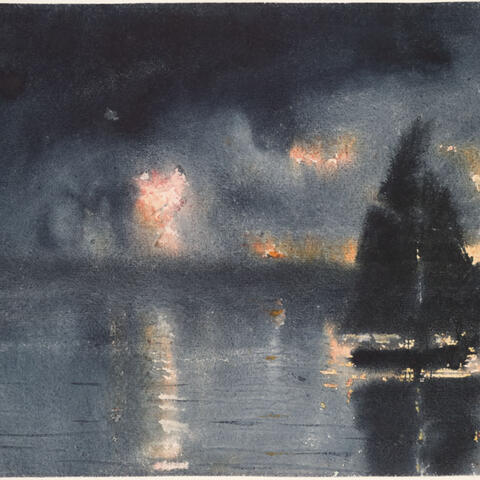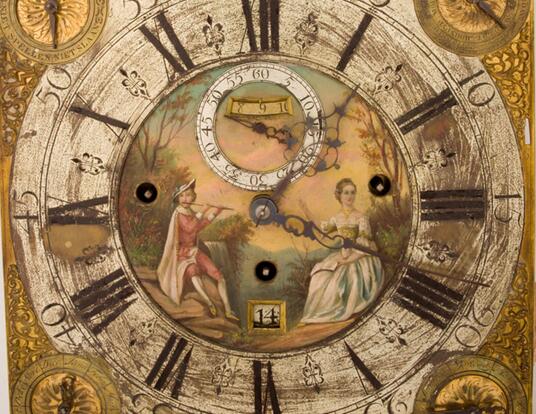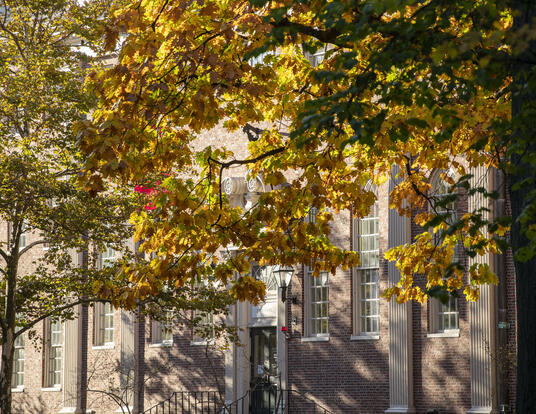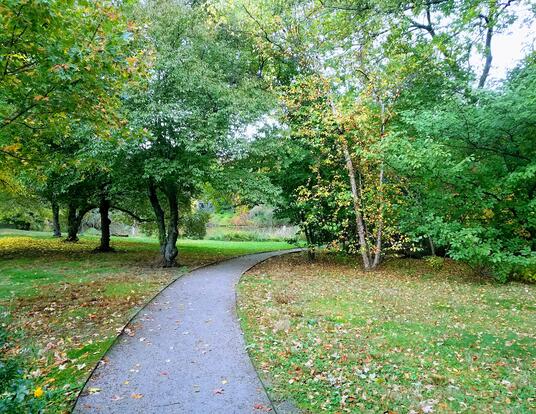The Ones Who Run (Boston)
Notes from a Writer's Desk
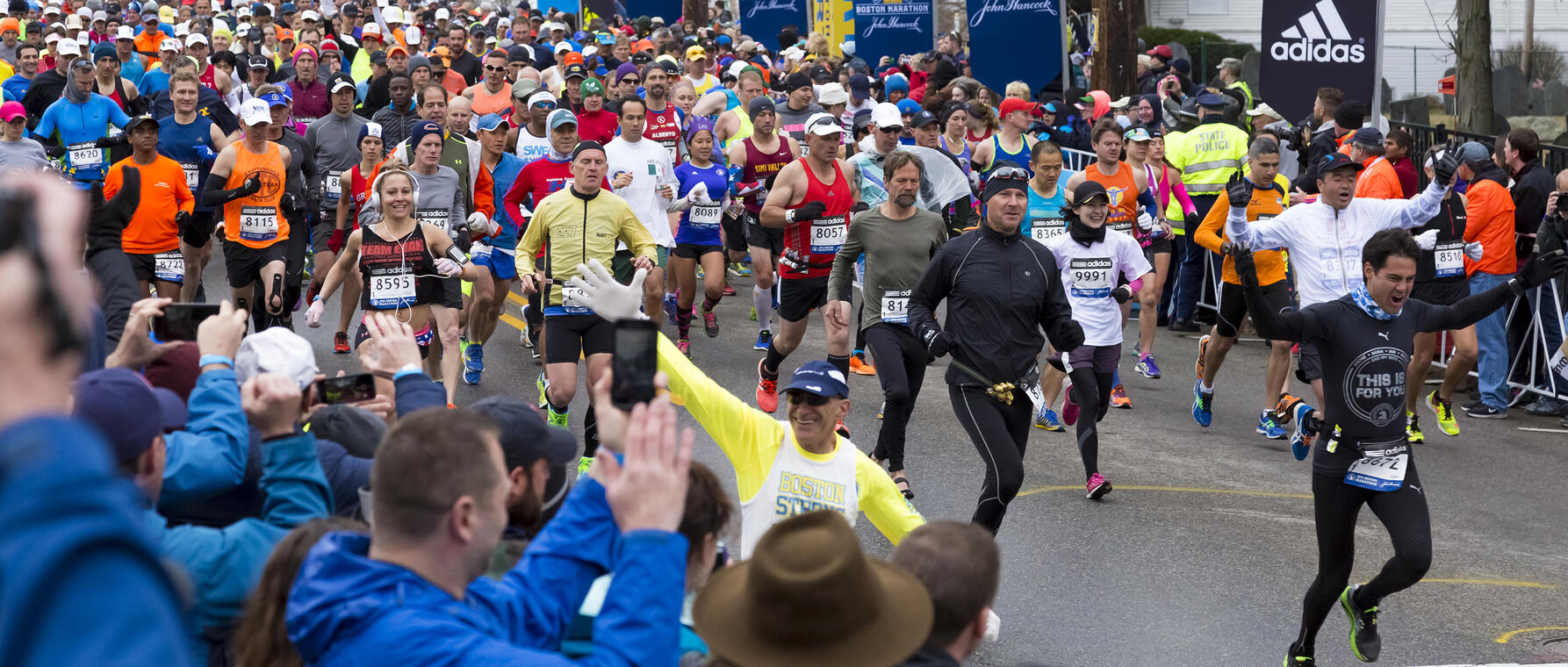
Research at Risk: Since World War II, universities have worked with the federal government to create an innovation ecosystem that has yielded life-changing progress. Now much of that work may be halted as funding is withdrawn. Find out more about the threats to medical, engineering, and scientific research, as well as how Harvard is fighting to preserve this work—and the University's core values.
We came to
see the ones who run,
the ones who
run because they must,
sinewy women
and men running for their lives,
blazing by
all 26 miles
faster than
most of us will ever run one,
that tall
rail of a man
with the
extra big lungs and extra big heart
forged by
high-altitude heat
hardly
breaking a sweat as he calmly rounds
the turn down
Boylston Street
toward the
blue and yellow finish line,
out for a
Sunday stroll
on a Monday
morn in April sun.
We came to
see the ones who run,
the ones who
run because they can,
the ones who
run because they were told
they’d never
walk again,
told their
sisters and brothers
would never
stand, never talk, again,
told that
hope was a dangerous sign.
We came to
see the ones who run,
the ones who
run for love,
for the love
of a daughter or son.
We came to see
the Hoyts,
Dick pushing
Rick in custom seat,
arms
stretched wide to soak up the spring breeze,
as close to
heaven as this life can be,
all the
world’s sadness and fear,
all its love
and beauty and hope
wrapped in
those four arms and four legs
and three
titanium wheels
and two feet
that will never stop
and the
endless cheers for this special pair
who inspire
every last person they meet
somewhere in
the middle of a sea of colorful sails
out on the
open waves, as free as they’ll ever be.
We came to
see the ones who run,
the ones who
run and make it fun,
wearing a
cupcake costume or wedding veil,
the ones who
run on two legs or one leg or none.
Each carries
in their gait
a spirit
that never yields,
running from
the past, running for the past,
on that April
day of fate
when musket
smoke fired
over
Lexington Green bespoke a new dawn,
a new freedom
in blasts of red,
hearts
burning bright like the two lights
in the old
north steeple,
a ghostly
glow that set fire to the world.
A fire that
burns in these lungs that keep fighting,
these legs that
keep striding, striding,
because it’s
the only thing to do,
striding into
pain and hills and misery
because
heartbreak can never break their will,
the will of
the ones we came to see,
legs churning
and lungs pumping still,
because they
know it’s the price they must pay to be.
Yes, these
were the ones we came to see,
we came to
see them be,
today they be, be as free today
as they or
anyone will ever be
* * *
If your morale, like mine, has been flagging, the Boston Marathon is a good place to look for hope. Watching the race last year, I penned the impromptu verses shared above. To me, there are few events more inspiring than the Boston Marathon. It’s not just any marathon; it’s the Everest of marathons. Run since 1897 on the third Monday in April—Patriots’ Day, commemorating the skirmishes in Lexington and Concord that symbolically mark the start of the Revolutionary War—the marathon this year followed the 250th anniversary of that fateful April morning (April 19, 1775). Now, as then, Greater Boston is at the center of the storm, called upon to mobilize our collective spirit and brainpower to ensure a future of freedom and opportunity.
As a kid, I used to love watching the marathon near the finish line. Seeing the elite runners fly by is undeniably impressive, but it's the runners who come after—the ones running for a cause, almost always for medical advancements—that truly inspire. So many individual stories of perseverance, of hope in the face of crushing circumstances, joined in a unique pursuit that forges bonds transcending place, rooted instead in something much more essential: our shared humanity. Perhaps no runners embodied and exuded that marathon spirit more than the Hoyts (referenced in the poem). This year, the fight, championed by these runners, to support life-changing—life-saving—medical research is more essential than ever. As the seemingly endless tides of runners turn the dull gray pavement into a river of beautiful colors, I pay attention to the small things: the messages that runners write on their bodies or shoes, the flags that adorn their accoutrements, the shape of their strides, the smiles or pain on their faces, their steely determination, met by the unyielding exuberance of the spectators, who embrace their own role in trying to will runners to the finish line.
No matter how clichéd it may be, I can’t help but view the marathon as a model for facing the long road of advanced research, among other worthwhile challenges—an analogy that feels heightened in this moment of mounting anxiety. The particulars of Boston’s course make it special, and also offer timely reminders. At the start, an adrenaline rush propels you down the early hills a little too fast, and even after settling into a rhythm, you fear that you will burn out. Perhaps you are beginning to doubt that the goal is achievable. But there’s no turning back to the safe, idyllic common of Hopkinton; each step, however small, is progress. The marathon’s midpoint of Wellesley is just what you need: music is blaring while a village of supporters relish their chance to cheer, and, especially in the case of the scream tunnel by Wellesley College, to flood you with positive energy. Seeking help from those around you is not only okay, but encouraged; supporters abound if you only look up.
From there, the ups and downs become more pronounced, and sometimes stops and starts can help you reset. After you make a sharp right turn by the Newton firehouse, things seem promising, but a challenge looms ahead: Heartbreak Hill. The thing is, Heartbreak Hill is actually the last of four hills, none of them overwhelming, but in tandem, the constant climbing wears you down, mentally as much as anything else. You likely know the feeling: despite the distance you’ve come, it’s as though you’re barely stumbling along, always uphill. To make things worse, you’re asked to reconfigure your research, your entire outlook. So much work, seemingly for naught. It’s daunting, discouraging, but it’s a process. Take a deep breath, perhaps pause for a while, and reflect on the journey to refocus your mind. Less important than thinking about the finish line is taking things one step at a time.
A few miles later, you’re running through Kenmore Square, in earshot of Fenway Park, where years of failure fueled resolve, and finally a breakthrough. After one more sudden descent into a tunnel and climb out, you’re rounding the turn down Boylston Street, the home stretch. Sure, your sprint to the line may be a bit chaotic, but you’re there, and the people around you are letting you know that your efforts have not gone unnoticed. So many times, at this juncture, I have witnessed a runner stumble, only to see a fellow runner help them to their feet, and walk, arm in arm, to the finish line. A moment of selflessness, of care, for a common goal. A common goal that lifts everyone.
No matter how bleak things may seem, do not lose hope. Take heart in the fact that your pursuits will make a difference, even if it does not yet seem clear to you how. That the marathon finishes right next to the Boston Public Library, the oldest public library in the country, is fitting: it is in public libraries that the knowledge we create, the stories we tell, will become accessible to all. Those who fear the spread of knowledge, who fear truth, sow fear itself as they seek to dismantle the freedom of intellectual inquiry, but there are multitudes who are supporting us, cheering for us. Let us not lose faith in the goodness of others. We are facing this moment together, and together we must endure.
Ready to book an appointment with FWC staff? Access the FWC intake form.
Get the Latest Updates
Join Our Newsletter
Subscribe to Colloquy Podcast
Simplecast


